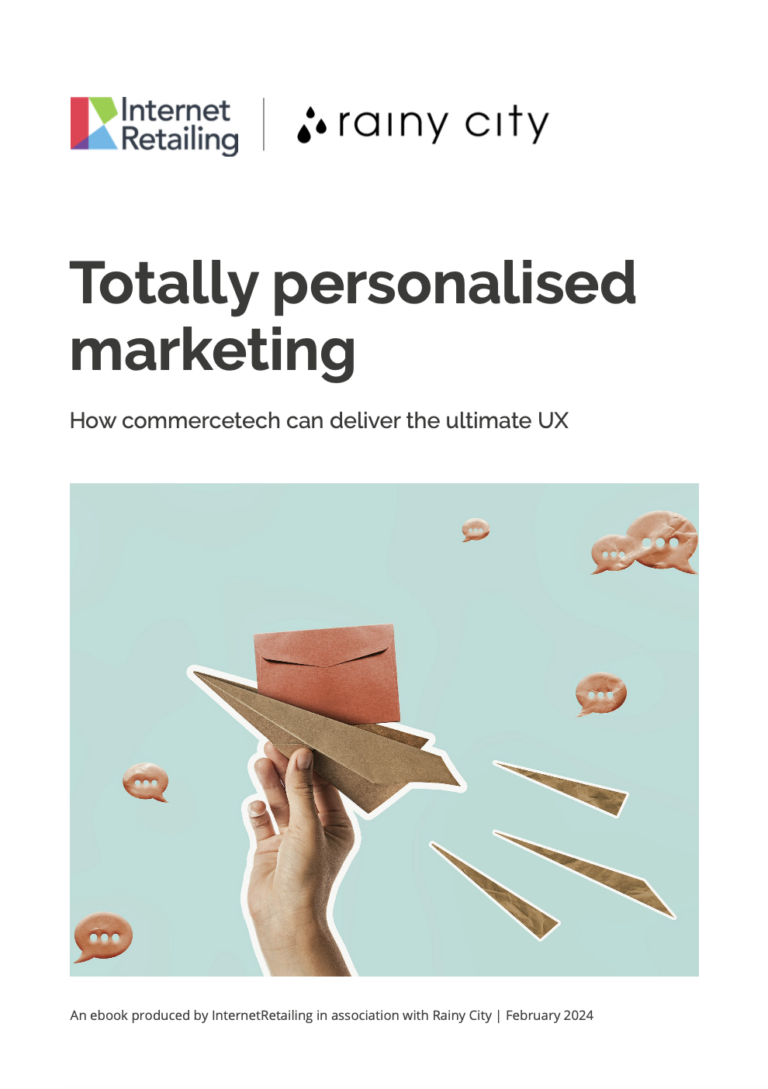Last month, Argos announced it was opening a store on the platform of a station on the London Underground network.
While he was on his way to the store’s official opening, David Robinson, Chief Operating Officer at Argos, took time out to talk to Sean Fleming, editor of eDelivery.Net, about the new Cannon Street Station store and retail logistics in general.
Argos is a familiar part of the UK retail landscape, and with half-year sales of £1.7 billion it’s one of the sector’s heavyweights.
It’s never been the sort of business that followed the herd, in fact it’s been the butt of jokes about the nature of shopping in its stores – you queue up to leaf through an enormous catalogue, use a tiny pen to enter the product number on a slip of paper, then start queuing again. Once to pay, and once again to wait for your goods to be retrieved from the stockroom.
But perhaps this somewhat creative take on fulfillment and customer experience – for all that it might feel oddly more at home in a bleak vision of the Soviet Union, with its queues and conformity – might be about to really come into its own. First there was the birth of reserve and collect services. Lately there’s been the roll out of a hub and spoke intra-store delivery network which, ultimately, makes it possible to open a shop the size of a modest domestic kitchen and still boast same-day access to 20,000 products.
Dynamo
“This is a really exciting time for us,” Robinson says – referring to the Cannon Street Station store opening.
“In fact, this industry has never been more dynamic, more exciting or had more opportunity.”
But dynamic and exciting can mean more challenging, I put it to him. It’s an observation he deftly brushes aside, saying: “I think that really depends on how you regard challenges.
“Retail used to be about product and price and nothing else. If you don’t have the things people want, and you don’t offer them at great value, you wont do very well.
“The big difference now, though, is that customers want convenience. They want something that works for them. They don’t want to have to fit in with the store. I think physical collection is a really big part of that.”
Robinson estimates that around one third of Argos’s business comes via its check-and-reserve service, where shoppers check a product’s availability online, reserve it and then collect it from a store.
“Our customers tell us again and again they don’t really like waiting in for a morning or an afternoon for a delivery. They’d much rather have the certainty and convenience of picking up at a time that suits them. So, yes, we think physical collection is a big thing, and that’s why we’re now open on a railway platform.”
But clearly this approach has its limitations. In theory, shipping a washing machine to an outlet like Cannon Street Station doesn’t present an insurmountable challenge. But how many shoppers will want to transport their washing machine home on the Tube? Probably not very many. Maybe being ground-breaking isn’t all that it’s cracked up to be; it might sound impressive, but are customers listening?
“We were the first company to introduce a click-and-collect service,” Robinson tells me. “And that was more than 10 years ago. That need to be more flexible, more accommodating, is now one of the most pressing in our sector. Hence the hub and spoke model, where some larger stores are feeding stock into smaller ones ,enabling same- and next-day customer collection.”
Of course, it’s not just Argos. When it comes to unconventional delivery networks, other big names are playing a similar game. Take, for example, the recent announcement by Amazon that it is partnering with 10,500 Post Offices to provide the same extended reach that Argos is going for – albeit in a different way.
Hybrid
Does that mean we’re seeing the emergence of a new hybrid retail/logistics model, where a business will be part retailer, part courier, part collection point? Robinson thinks so. “You have to find a model, an approach, that works for your business. But essentially, yes, that’s the way things are moving and there’s no denying it.”
You don’t need a slide-rule or an MBA to work out where the pressure for change is coming from, he continues. “Customers have busy lives and technology has made it easier than ever for them to find what they want, when they want it. The next logical step is getting it where, when and how they want it, too. Those retailers who appreciate that and do something about it are clearly going to be in a stronger position going forward.
“That’s why we committed not just to opening 50 digital stores across the country, and introducing our hub and spoke model, but to finding innovative ways of bringing our product range to people, rather than simply expecting people to come to where we hold the stock.
“Will we be the only business doing that? No, of course not. But anyone following suit out of a desire to follow the herd isn’t guaranteed automatic success. Understanding your customers and listening to them has never been more important. If you don’t get that part right, the rest of it will be an uphill battle.”
As we enter this brave new world based around shifting goods to where customers want to take delivery of them, there will be new challenges and even barriers to entry for new, online-only, market entrants. “Of course, then you’ll need the right distribution network to bring all of this to life,” Robinson says. “Is stock in the right place? Can it be moved quickly enough to meet customer requirements? Do you have the physical infrastructure to cope?”
The claim of being able to provide the largest stock available in the smallest store is certainly a great little tag-line for Argos as it continues in its efforts to transform itself from a catalogue shop to a leader in the digital retail space. Around one-in-four purchases made at Argos are now on a mobile device, the company says. It’s not always easy, in business transformation, to know whether change is a process of responding to customer behaviour, or of provoking it. But it’s certain that not changing at all is simply not an option.
Future
As 2014 draws to a close, how is that transformation going? And what’s on the horizon?
The hub and spoke trial has now been rolled out nationally, and the opening of 50 digital stores (some of which are concessions inside Homebase DIY stores) has been completed. So does this mean there will be more quirky openings along the lines of the Cannon Street Tube station store, which was done in partnership with Transport for London (TfL)?
“The honest answer is we don’t know,” Robinson admits. “We’re really excited, but it’s the customers that will be the judge. I think it should do really well, and obviously we’re really excited about it. But it’s too soon to say right now. And clearly if it does well, we’ll be talking to the guys at TfL to see what else we might be able to do. If putting a store in an area where high volumes of people are commuting works, then that will be something we’d look to do in other parts of the UK.”
At a time when the business of moving the right amount of the right stock so that it gets to the right people and places at the right time has never been more important, the role of the head of operations and logistics within a retail concern has also never been more important.
With all eyes suddenly on the person in charge of the warehouses, trucks, and shipping, the glare of the limelight might be unfamiliar and uncomfortable. But, returning to his theme of it’s all about how you regard challenges, Robinson’s take on that is that it’s as much an opportunity to shine as it is a reason to feel exposed.
“This a role where you have the opportunity to be at the fore when it comes to shaping the strategic decisions the business takes,” he suggests. “We have to be able to lead by demonstrating what’s possible, not just now, but in the future. Being flexible enough in the decisions we make today is one of the best ways to ensure we can remain flexible tomorrow.”










